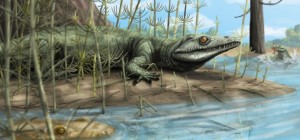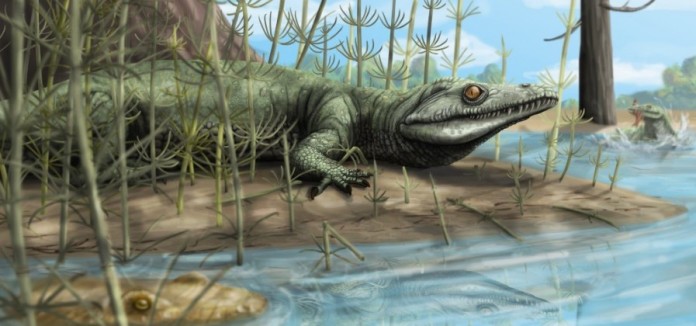A team of scientists has discovered a new fossil reptile that lived 250 million years ago in Brazil. The discovery is important because the reptile lived just after the great Permo-Triassic mass extinction event that occurred 252 million years ago

Discovery
- The species has been named as Teyujagua paradoxa, derived from the language of the Guarani ethnic group and means ‘fierce lizard’
- The species has been identified from a mostly complete and well-preserved fossil skull.
- The fossil fuel was discovered by a team from the Federal University of Pampa (Unipampa)
Teyujagua
- Teyujagua anatomy is intermediate between the more primitive reptiles and a diverse and important group called archosauriforms
Features of Teyujagua
- Teyujagua was a small, quadrupedal animal, and grew up to about 5 metres in length.
- It’s nostrils were placed on the upper part of the snout, a typical feature of some aquatic or semi-aquatic animals, such as modern day crocodiles
- Teyujagua likely lived on the margins of lakes and rivers
Points to note
- Research was published in Journal Scientific Reports
- Research was done by a team from University of Birmingham
- Research head- Richard Butler
- Fossil was excavated from Rio Grande Do sul in Brazil
AffairsCloud Recommends Oliveboard Mock Test
AffairsCloud Ebook - Support Us to Grow
Govt Jobs by Category
Bank Jobs Notification





